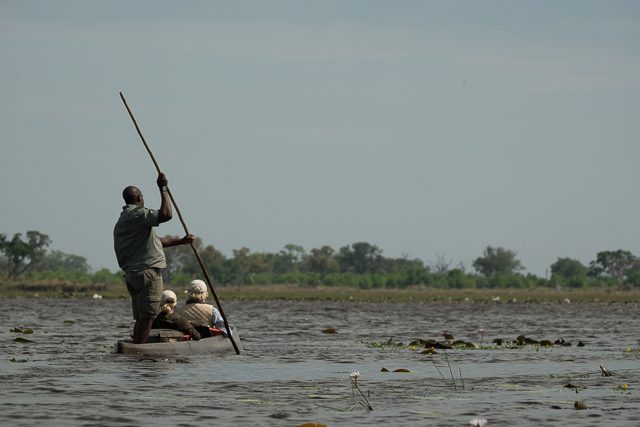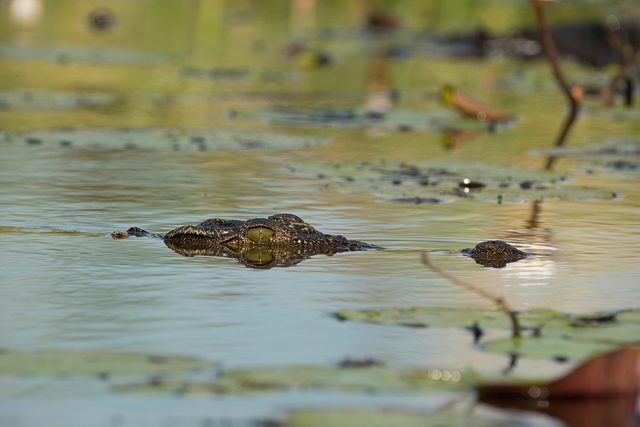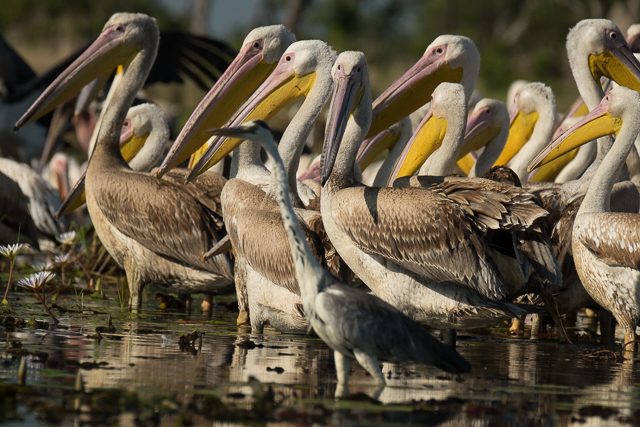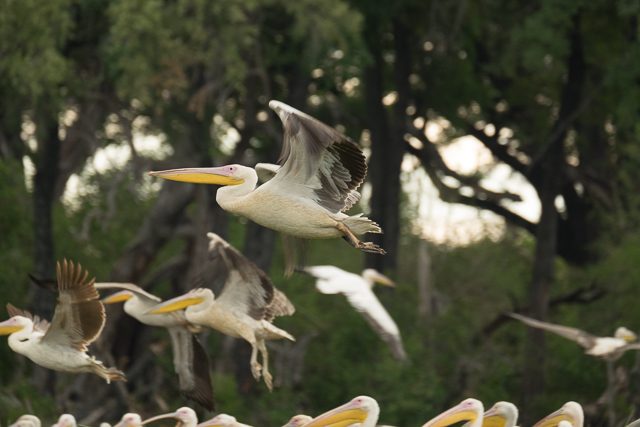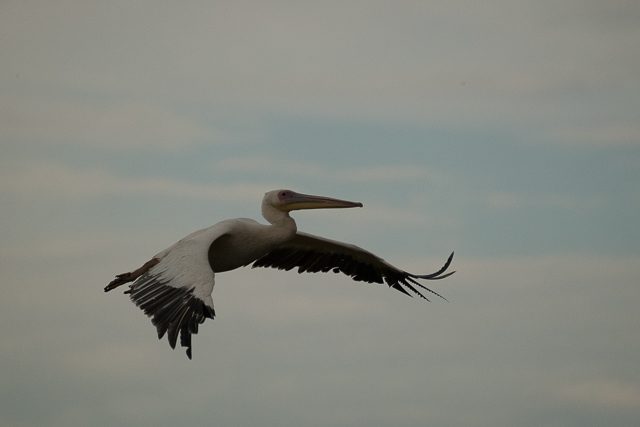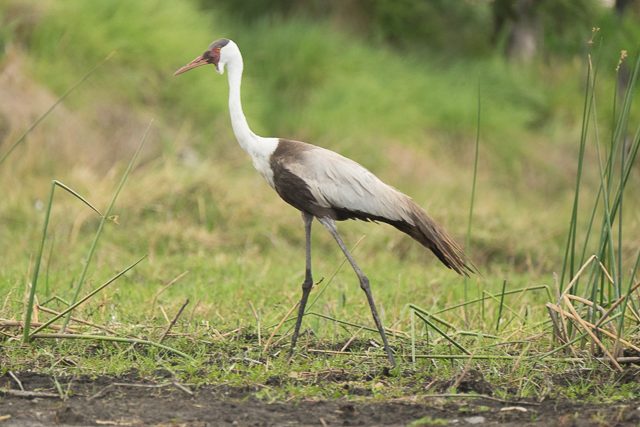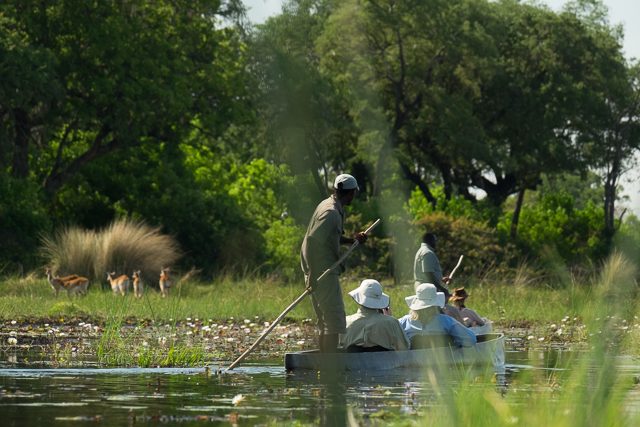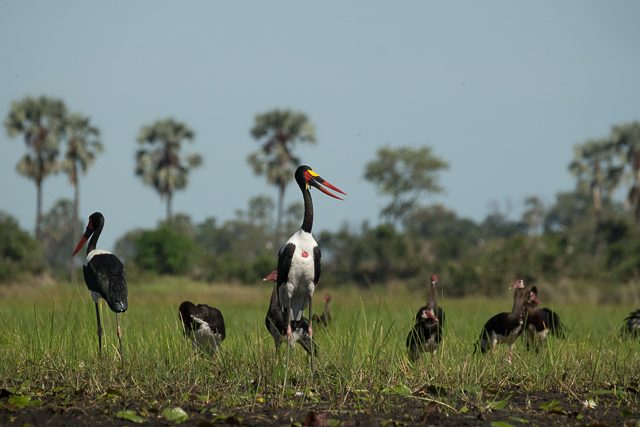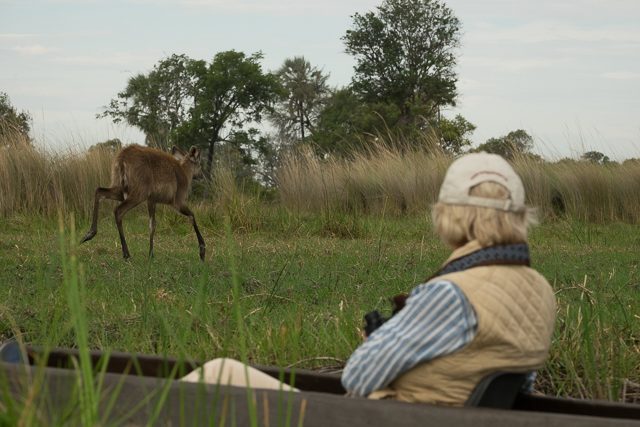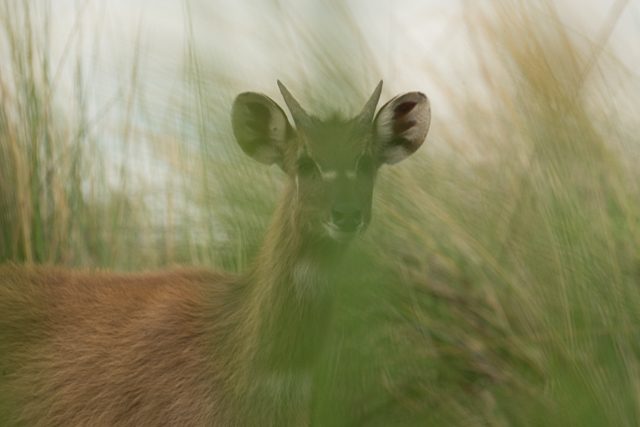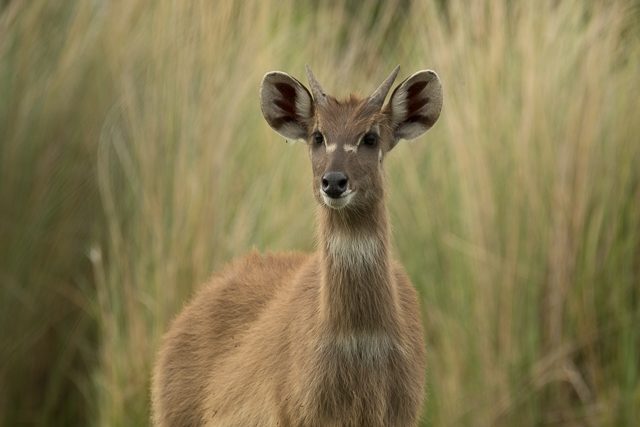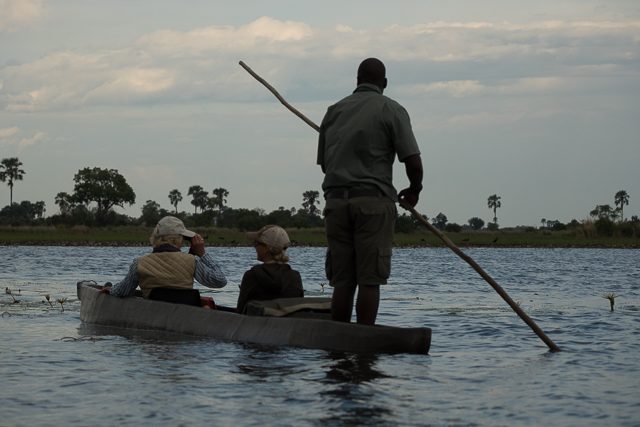I sit in a mokoro, or African dug-out canoe, my eyes only a metre above the waterline. My feet are stretched out before me, with my camera gear between my knees, and I am resting on a cushion, with the expert poler standing behind me. I have no idea how he stands so easily, as I felt the mokoro wobble even when I was carefully getting into it. We slide through the water to a rhythm as he leans on the pole, propelling us forward with a whoosh, to be followed by a silent glide, while the canoe gradually slows, before the next whoosh and surge forward.
We are in one of the best places in Africa to ride a mokoro – the Okavango Delta in Botswana. At first we glide around the edge of a lake, eyeing crocodiles and watching a pod of hippos snort in the distance. Waterfowl are everywhere – teal, geese, stilts, herons and egrets, terns – all there. I hope to see a favourite egret here, the slaty egret – one that you can see in few other places. And sure enough we do, without much difficulty.
We come across knob-billed ducks. These are pale ducks with dark pots, an iridescent sheen, and the male displays a splendid massive black knob on his bill. Then we poled through thousands of great white pelicans. When an African fish-eagle stooped by, the sky around us was filled with the panicked flight of thousands of birds.
We the left the lake and entered a channel, sliding among papyrus reeds, and centimetres away from colourful reed frogs clinging the the reed stems. Even though the wildlife we were seeing would usually be considered not to be as dramatic as those we see on a game drive activity, such as elephants or the other large predators, we were so immersed in our engine-less world and so engrossed in the sounds and activities of the numerous smaller wildlife we were getting to know, that to us, this experience was just as wonderful.
Then, all of a sudden, and on the far side of the reeds, we saw a shape slowly moving behind the papyrus. A dappled shadow came and went, then appeared again, only to disappear. The mokoro waited motionless, and we focused through the reedbed. Next the poler gesticulated, and out it tiptoed, into a glade and burning sunlight. It froze staring towards us, and its beautiful stripes shone from the shadows. Its strange small rounded ears were cupped in our direction, and we were silent. This was only the third time I had seen one of these, and it was by far the best sighting I have ever witnessed. I couldn’t tell my guests what it was for fear of scaring it, but they all knew this was something special.
Then it vanished. And that sighting made my day!
It was a sitatunga (Tragelaphus spekii). This is one of the most amazing and unusual antelopes you could encounter here. Although they live in many parts of Africa, the Okavango Delta is one of the best places to see one, because it is a swamp and water specialist. Marshlands are being encroached by Man throughout the world, and Africa is no exception. The reduction of swamps and marshes is the biggest threat to the sitatunga.
Interesting facts about the Sitatunga.
The sitatunga is related to the bongo and the harnessed bushbuck (or kewel) and, like some other members of the Tragelaphi, it has white blotches and markings. It has incredibly long splayed hooves, enabling it to walk on floating papyrus islands in swamps and to swim quite well. When it does so to escape danger, it may immerse itself almost totally in the water, leaving only its nostrils above the surface. An adult can weigh from 50-125 kilograms. Only males have slightly spiralled horns. Females become sexually mature at about 1 year and males at 1½ years. Gestation is about 7 months, when a calf weighing about 3½ to 4 kilograms is born. The calf then “hides out”, which means the mother hides it, often on a bed of reeds in deep water for protection. They can live for about 20 years.
Justin

